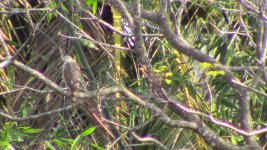Hainan on the fly
Well-known member
I apologize for the poor quality of the photo but I am thinking this is an Eurasian Sparrow Hawk. I do question myself as an app I use told me it was "rare". I'm new to birding and kind of learning on the fly. I'm assuming the app is telling me it is a "rare sighting" given my location and time of year and not that it is a "rare" bird. Anyway, please let me know what you think about the identification and about my assumption about what an app might be referring to in the context of "rare". Happy birding and thanks if you find the time to offer some guidance to a newbie.
Cheers!
Brian
Cheers!
Brian






